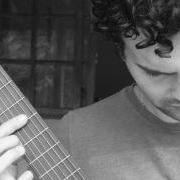All Activity
- Past hour
-
stigbn25 started following What do you feel when composing?
-
What do you feel when composing?
stigbn25 replied to Henry Ng Tsz Kiu's topic in Composers' Headquarters
As others have said, when I compose, I think and feel mostly about the technical aspects of music. Also, I rarely experience the "correct" feelings when listening to other people's music. I might get happy and feeling relaxed when I hear music that was supposed to be sad for example (like minor is not sad for me, but I understand the idea), and anxious and maybe irritated when I hear music that is supposed to be glorious and happy, and annoyed when a theme is repeated too much - or similar. So I can't really write music to fit a certain mood, I just write what I like at the moment. Maybe when it's finished I can sort of relate it to a certain feeling. Also, I sort of think that your inner, unconscious feelings come out in the music, even if you don't think about it. I recently tried composing from a written template - like a small "poem" about someone going on a journey, and it actually sort of worked as a blueprint. But still, as soon as I get into the various parts, I just think of music theory and how to get from A to B, how to make a contrast, or should I use horn or flutes now or similar. - Today
-
6 Dances : my composition
Vasilis Michael replied to Vasilis Michael's topic in Piano Music, Solo Keyboard
I wish to have more free time to help me develop more ideas. My time is very limited unfortunately. I would love to dedicate time to write another piano sonata . Maybe slowly slowly so I have to adapt to this regardless of the limited time -
6 Dances : my composition
TristanTheTristan replied to Vasilis Michael's topic in Piano Music, Solo Keyboard
You're Welcome! -
6 Dances : my composition
Vasilis Michael replied to Vasilis Michael's topic in Piano Music, Solo Keyboard
Thank you so much for your words and your attention my dear friend. Really appreciated it 🙏🙏🙏🙏🙏 -
Thanks, as per usual, for your detailed feedback! In regards to the pizz. Staccatos, I was under the impression that it was acceptable to use for Cb. And Cll. Parts, but not for Viola & Violins? At least, that’s what I was taught in my year of college when doing extra curricular arrangements with the theory professor. But yall tend to be much more wise than I at this stuff 😅 I was never really strings-oriented and am mostly self taught so I’ll take that into account for sure. I was also unaware that there was a specific marking for Bartok! the “mf” for the bartok section was mostly for the playback. In hindsight I should’ve made that marking invisible to correct for its implausible use, IRL. I agree, the piano also should stick out a bit more. The sound used for the piano and for the viola come from the Spitfire LABS VST3 plugin. I can optimize it to be a bit louder in the left hand, using a hidden staff, similar as to how I achieved that in the original playback for “Remembrance”. and as far as the key change goes, I thought the use of the Neapolitan chord modulation provided a pleasantly unexpected movement in that section during the mod. To A minor. What would you suggest in that section to maybe smooth it out a bit more? I’ll admit I had trouble figuring out where to take it and how to move it more seamlessly to A minor. 😅 I’m not a modulation Guru, but have been lucky in some instances where while writing, the modulation ended up just working on its own without much effort based on what I wrote prior to it. My process is a bit unorthodox in honesty, since I’m fairly un-trained with composing, mostly working off of my own ear. thanks Peter!
- 2 replies
-
- chamber music
- strings ensemble
-
(and 1 more)
Tagged with:
-
PeterthePapercomPoser started following Omaggio a Stravinsky- (solo Clarinet) , Motorcity Toccata (for Solo Piano) , Arrangement of Binary Data IV. For Full Orchestra and 1 other
-
Hey @UncleRed99! Glad to see/hear that you've finally moved on to a new piece! I think the proper name for a string quintet + piano combination would be "Piano Sextet". Traditionally for example, a duet of Violin and Cello with Piano is called a "Piano Trio", a trio of Violin, Viola and Cello with Piano would be a "Piano Quartet" and a quartet of 2 Violins, Viola, Cello with Piano would be a "Piano Quintet". So I'm just extrapolating that this would be a "Piano Sextet" based on those naming conventions. I'll address a few things that bothered me about the score before actually talking about the music: There's a few things to note here. First, when writing pizzicato strings, you don't need to add a staccato marking for the pizzicato. It's redundant considering that pizzicato is already a very percussive and separated effect. Also, you have the Bartok pizzicato at mf, followed by a regular pizzicato at forte. That doesn't really make sense considering that Bartok pizzicato is achieved by snapping the string as hard as possible so that it hits the fingerboard. The Bartok pizzicato would naturally have to be louder than the regular pizzicato just by the nature of the effect. Also, there's a special symbol for Bartok pizzicato that string players recognize: I think it would be more concise to use this symbol. Here you have the indication to play legato contradicted by the separated 8th notes. If you want the player to cancel their pizzicato playing and return to bowing you can put "arco" or "ord.". Now about the music. The first thing I noticed is that this is a very quiet piece. I had to listen to it on my Bluetooth speaker to really hear it better. But I think the problem is also that when the piano is playing the melody alone without the support of the strings, the piano melody is often simply inaudible above the accompaniment. Especially the grace notes are lost because they go by so quickly. The way to counteract that is to of course use MS Basic soundfonts for the piano so you can bring out the melody in high relief by using higher velocity values for those notes (which you can edit in the "properties" tab). Unfortunately, the Musesounds samples don't currently respond to velocity changes so you'd be forced to use the MS Basic soundfont for piano. But imo (since I do this all the time) I think the clarity of the melodic line is to me a much more sought after commodity in music than the supposedly "better" sounding Musesound sample. But that might be just me. Overall, I like the melancholy vibe of the piece! The only thing that bothers me is that the key changes seem to be inserted into the piece just for their own sake. And the modulations should be led by the melody for them to make audible sense and create a more breathtaking effect. Thanks for sharing!
- 2 replies
-
- 2
-

-

-
- chamber music
- strings ensemble
-
(and 1 more)
Tagged with:
-
Henry Ng Tsz Kiu started following Seasonal Competitions Suggestions
-
Henry Ng Tsz Kiu started following Motorcity Toccata (for Solo Piano)
- Yesterday
-
Hi! Actually I just completed roughly half of my piano toccata piece inspired from living near the motor city (Detroit, MI) in my childhood... I decided to make this toccata piece since I thought the mechanistic characteristics of the genre match well with general images of the motor city... After writing nearly the half of the piece I spent many days but still have no idea how to develop further the middle climax section... Could you comment on this piece and give any suggestions how to complete this middle section? I'd really appreciate your help!
-
No need to answer in German... as I already told you I am French, whether you like it or not If you don't understand the lyrics, activate the subtitles provided on YouTube. You will have the pleasure of discovering a magnificent poetry that undoubtedly retains some of its power in English. But if you want to talk about music in a constructive way it's ok. Otherwise this discussion does not need to be
-
I will be lazy on this forum, because I think the mods want it to be some kind of academic thesis! Archived! I am 56, with two theory and composition degrees! Too academic and pedantic for me to comment too much! Try this... Three Roads Free Sheet Music by Robert C. Fox for Various Instruments | Noteflight
-
Hello, all! This as a full arrangement of Binary Data IV. Binary Data IV. is a piece by Alfonso Peduto that uses real-time physical delays on a piano to play incredibly fast arpeggios and descending lines. As such, the original song does not have one individual leading melody, which led me to write a unique melody for my orchestration. Thank you, hope you enjoy!
-
Happy Autumn to all! So... turns out, due to a miscommunication, I won't be writing a mini-bassoon concerto after all. Instead they want me to write a miniature concerto for violin and chamber orchestra. I've started sketching it out here; though I'm still at a very early stage. I'm thinking three movements; though the time limit is 5 minutes total. No prizes for guessing which composer inspired this. (I think it's rather obvious!) Those who guess the right answer can tell me if it's sounding too similar to the original work? Am using the chord sequence function in MuseScore to sketch out my harmonies. Only discovered this recently, and am finding it somewhat useful. Wonder if anyone else has tried this out? Apparently it works even better with Kontakt 7 and Sonuscore orchestral elements; but I haven't got round to installing those yet.
-

Seasonal Competitions Suggestions
Kvothe replied to ChristianPerrotta's topic in Monthly Competitions
Have there been any suggestions for 2025 -
I wrote this piece in 2018, probably for some composition competition.
-
Musical Moment in B major
Vasilis Michael replied to Vasilis Michael's topic in Piano Music, Solo Keyboard
"Don’t worry, I know the entire work of Chopin as well as that of my other favorite composers. It’s just that Schubert is the composer who influences my psyche more than anyone else. Him and Mozart. And now that you mentioned Chopin, I’ve also composed pieces that resemble Chopin a lot 🙂 Among my favorite composers." -
You are welcome. As a composer, it is important to know what influences us. Chopin is another great early to mid romantic composer. I recommend listening and studying his works. 🙂 But be prepared to dive deeper into chromaticism.
-
Musical Moment in B major
Vasilis Michael replied to Vasilis Michael's topic in Piano Music, Solo Keyboard
Thank you so much for your attention and appreciation. Schubert, and to some extent Schumann as well, influence me a lot. Even with my influences, I try in some way to leave my own mark. On the one hand, I feel blessed that I can capture the style so accurately, but on the other hand, I feel locked in. Still, this music expresses me and I love it, which is why I can’t escape from it. In any case, I’m very glad that you enjoyed it and appreciated the effort. -
As Bhko mentioned, I, truly, feel that you capture Schuman and Schubert in this solo work. Both were excellent piano writers at their time. They knew how to use the piano as character and as instrument. Here, you have illustrated that. Many do not know that piano isn't just instrument. I love the 3 against 2. It creates lovely cross rhythm. The subtle chromatism, which colors the theme, is always nice to hear. 🙂 Over all...kudos
-
MuseScore - what is it missing?
Alex Weidmann replied to Alex Weidmann's topic in Music Notation Software Help and Discussion
Thanks, but I was actually talking about combining parts onto one staff for the conductor's score. E.g. Merging trumpets 1 and 2 into a single staff. This can be done with implode; but it's apparently it's much quicker and easier in Dorico.


.thumb.png.8b5b433a341551e913a34392660bc95b.png)






